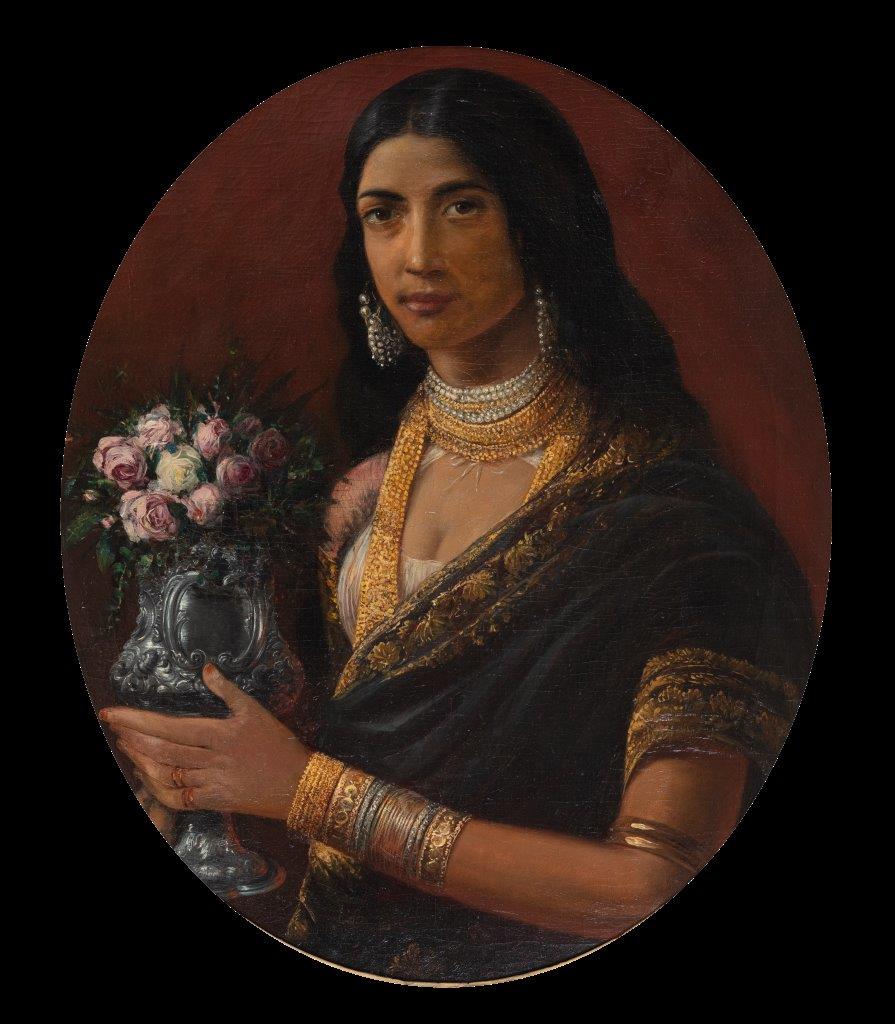Date of Birth: 1848 - 1906
Medium: Oil on canvas
Size: 30.5 x 26 inches, 77.5 x 66.5 cms
Provenance: Collection of a reputed art gallery, New Delhi
Estimate: ₹ 80,00,000 - ₹ 1,00,00,000
Provenance-Collection of a reputed art gallery, New Delhi. Acquired
from Christie’s, New York, September 2021.
Previously from Sotheby’s New York, September 2007.
The father of Modern Indian Art, Raja Ravi Varma was born in 1848 in Kerala. At 14, he went to Travancore Palace to learn watercolour and his best medium, Oil painting was taught to him by a British artist. He is given the credit of providing modern iconography to Indian mythological figures which were earlier depicted following strictly indigenous rules. He blurred the lines between traditional Indian art and contemporary art of that time. His portraits of Royals and noble women became very popular among the Indian ruling class, which liked his European realistic approach to immortalize themselves in near accurate pictures. In 1873, he won an award at Vienna and subsequently received multiple awards and felicitations. He then travelled all over India to explore his subjects. His figures of Indian gods and goddesses and other mythological characters became instant hits.He started his printing press where he churned Oleographs and prints. Being cheaper than paintings, his oleographs became a household possession. His contributions are endless and no amount of writing can encapsulate his importance in Indian art history. It is because of these contributions that he is called the father of Modern Indian Art.This particular portrait of an elite woman made with oil paint is a paradigm of the newly acquired medium during that period. The intricate work makes the woman look polished and graceful in gold & diamond jewellery, breathing life into the canvas. The bling effect is more heightened with the decorative Victorian vase with a bunch of roses, grabbing equal attention in the frame.




 Authenticity
Guarantee
Authenticity
Guarantee Bid in auction or buy now
Bid in auction or buy now